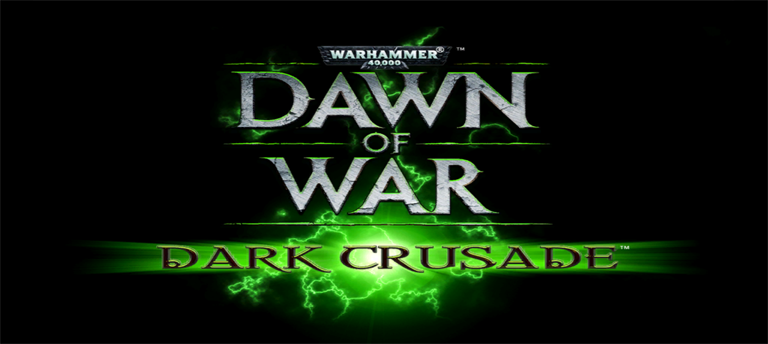
Coming hot on the heels of Winter Assault, the third "expansion" of Dawn of War had some oversized boots to fill.
The original game had already given us a different spin on the RTS formula by tying resources to control of strategic points, introducing cover and morale mechanics and placing the focus squarely on tactical-level squad command, rather than the base building and resource gathering of RTSs past. It also gave us four disparate factions to play with (Chaos, Eldar, Orks and the eponymous Space Marines) and bundled all said skirmish-y joy with stable LAN co-op.
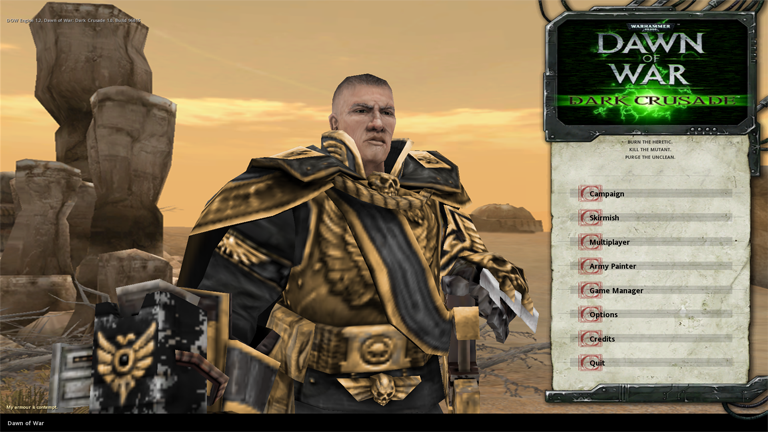
Winter Assault raised the already high bar by adding a fifth faction, the habitually understaffed Imperial Guard (my favorite), adding new units to existing rosters and having the best scripted campaign of the series, which culminated in a battle you thought was for control of a fallen Titan only to have some unexpected guests pop in. It was a solid expansion to the base game which broadened its horizons a little without fussing with its solid base mechanics.
Given that much existing innovation, any normal studio would have been justified in resting on its laurels and going down the More Stuff highway — padding out unit rosters and phoning-in another forgettable W40K "plot". But Relic Entertainment was made of sterner stuff...
They began where other studios would have finished, by adding two new factions (Necrons and Tau), a new unit for every existing faction (Daemon Prince, Harlequin, Heavy Weapons Team, Flash Gitz and Grey Knights) and more maps for co-op. And then they rolled up their sleeves.
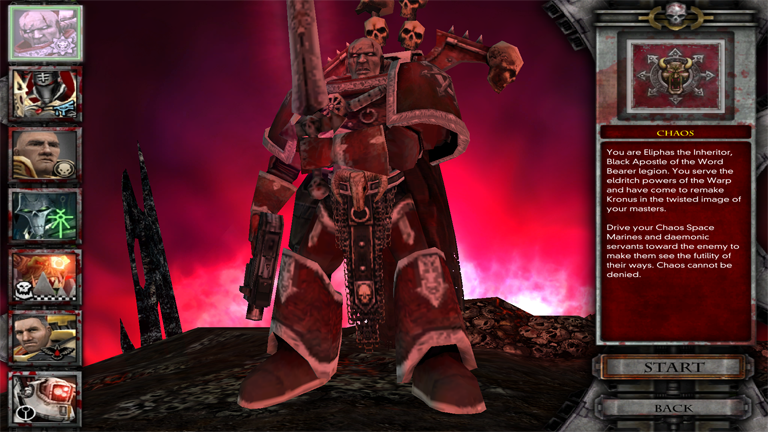
The core campaign, taking place on the unfortunate world of Kronus, pits all seven factions against each other in a planet-wide free-for-all for — Some Important Reason, I'm sure (let's be honest: compelling writing ain't exactly W40K's forte).
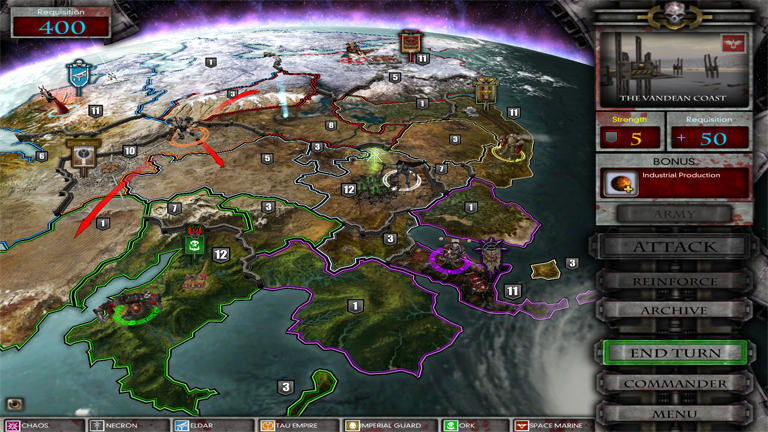
The first part of the campaign (and DC's prime innovation) is the Kronus world map: a turn-based affair which lets you read (gasp!) a little blurb about the region whose ecosystem you're about to traumatise, reinforce a region you already control or decide which one to invade next. All of the computer controlled opponents also move once per turn, fighting amongst each other when they aren't busy trying to ruin your day.
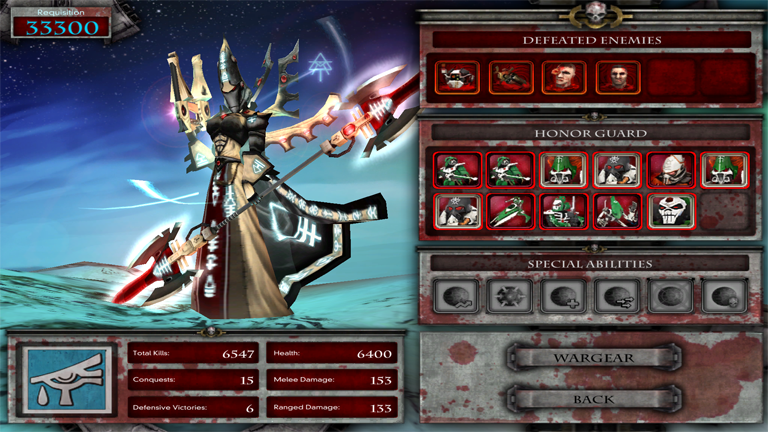
The map also lets you peek at your faction commander's stats, achievements, honor guard and upgrade their "wargear" (weapons and armor that boost their stats, change attack types and give them added skills like teleportation, eventually turning them into a powerhouse capable of wiping out entire squads by their lonesome).
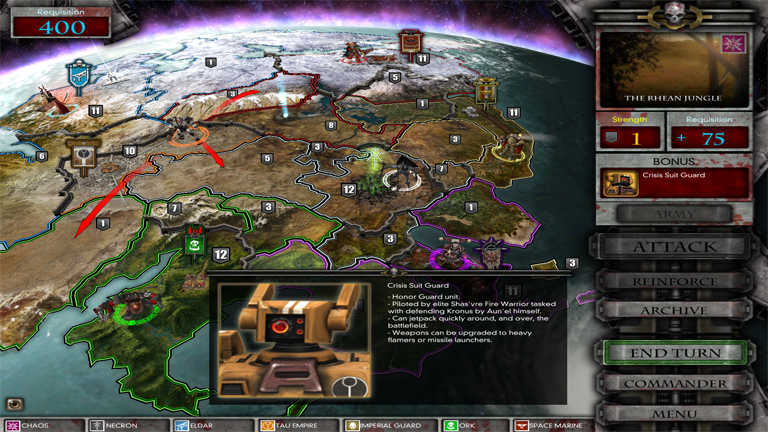
Conquering certain regions comes with added perks. Some give bonuses like extra resources at the start of a battle or a lower cost for fielding troops. Others award you with honor guard units, which look like your run-of-the-mill troops, but come with elevated stats, appear with your commander right from the get-go, without having to be deployed and (most importantly) exist outside of your unit cap, allowing you to field a larger-than-average army.
Once in an actual battle, the game defaults to tried-and-true DoW shenanigans: you build your base, buy upgrades, expand your sphere of influence and try to beat the snot out of your opponent. The same, fondly-remembered formula — with two new and important caveats.
First, is the fact that the decisive, final battles against each faction take place on unique, partly-scripted Stronghold maps with their own sets of objectives (like disarming a Titan cannon when facing the Imperial Guard or destroying Ork banners to sow dissonance in the ranks). This is a nice touch that ends with a little scripted sequence and sets the faction finales apart from the usual grind.
And second is base defenses in conquered regions being permanent, which means you start any future defense of that region with all of your fortifications intact (a great feature that rewarded forward-thinking and thorough preparation — which S---storm did away with).
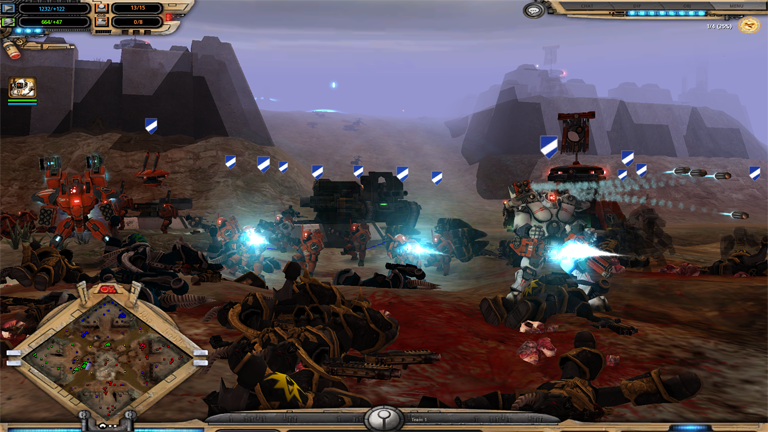
Put together, little that Dark Crusade offered was new to gaming, as a whole (the strategic world map, for instance, dates back to 1998's Dune 2000, at least); but, for the series, it was more than enough to freshen up the experience.
Relic also went the extra mile and made sure you could play Dark Crusade as a standalone title, with all seven factions intact and neither of the previous entries installed (well, with the aid of an unofficial unlocker tool, anyway; but kudos to them for leaving all of the resources in-game, without the need for the other installations).
And then, for another encore, they released a performance patch which optimized the game to run faster on Nvidia machines, which (at the time) made a big difference to cash-strapped pigs like myself, who could finally watch large-scale engagements unfold without fuzzy low detail models or frequent stuttering.
Dark Crusade was revolutionary for its time and remains my favorite RTS to date, which I still boot up every now and again to co-op with my brother (who just happens to be a Tanuki). It was a testament to thoughtful game design, studio dedication and solid programming and remains a Great Game if you like the W40K universe, RTSs or gameplay that's easy to get into but hard to put down.
Pig Recommends:
-
-staying far, far, far away from S---storm – the Iron-Lore-outsourced bastard-child of proper DoW, which ended the series on a sour note; with shoddy unit models and animations, lazily designed maps (that, for whatever reason, were mostly orange or brown), a forgettable campaign that was DC's carbon copy sans improvements and the addition of flying units which ruined DoW's meticulously tuned balance, S---storm was little more than a shameless cash grab and should be avoided at all cost;
-
-Titanium Wars (mod) – for a vastly expanded unit roster and larger (though grind-ier) battles; it's not the prettiest mod ever, with model quality veering from amateurish to outstanding, but it has the fewest bugs and crashes of all the mods I've tried;
